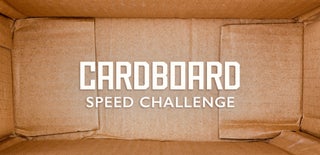Introduction: Cardboard Calculator
Known as "Slider Adder Calculator", this system is one of the first mechanical calculators. As their operating principle is simple, it is possible to make one with only some cardboard and some office supplies.
You will learn how to make a calculator allowing you to perform three-digit additions.
If you like the challenge, you can also imagine a version with more digits, or allowing to perform subtractions.
Supplies
Thin cardboard, such as cereal packages
Thick cardboard
A sheet of checkered paper, or a sheet and a printer
Glue (+ adhesive tape but this is optional)
A pencil (+ pens / markers for personalization)
A ruler
Scissors (a cutter may be more convenient for certain steps)
A toothpick or anything that can be used as a stylus
Step 1: Preparation of the Strips
Prepare the strips.
Make as many strips as you want figures displayable by the calculator (three in my case).
If you prefer to print them, here is a template in pdf format:
Step 2: Make the Strips Rigid
Cut thick cardboard to the same dimensions as the pieces of paper.
Glue one piece of paper per piece of cardboard.
Step 3: Making the Slides
On thin and smooth cardboard, transfer the sizing of a strip.
U-shaped slides will have to be obtained, so plan the thickness of the additional sliders before cutting and folding.
Check that the strips can slide. If not, adjust them or repeat this step.
Make a slide by strip.
Step 4: Beginning of the Structure
Cut thick cardboard and glue the slides one next to the other.
Allow a margin for the future structure.
Step 5: Continue the Structure and Adjust the Mechanism
Cut three pieces of thick cardboard to circle the slides.
Put the strips in the mechanism.
Adjust the height of the slides by cutting them when they protrude above the strips.
Step 6:
Cut the strips at each line except for the most-right strip.
Also cut the sliders at the lowest right line (visible on the second and third images).
Step 7: Front Panel
Cut a piece of thin cardboard to the same dimensions as your calculator.
Then comes the most delicate step. Report the locations of the various elements on the new piece of cardboard.
Step 8: Almost at the End
Cut out the areas in red on the first image.
Then check that the elements are well aligned like in the third image.
If they are not, try adjusting or repeat the previous step.
Step 9: The End
On the front panel, put the useful annotations (numbers and "R"), then hold it in place. I chose to use adhesive tape but it is possible to stick the edges instead.
Find a pointed object as a stylus, then you're ready to calculate!

Participated in the
Cardboard Speed Challenge








